NCERT Solutions for Class 9 History Chapter 4 – Livelihoods, Economies and Societies
NCERT Solutions for Class 9 History Chapter 4 – Livelihoods, Economies and Societies are essential for understanding economic and social changes in the CBSE curriculum. These well-structured answers help students grasp topics like colonial forest policies, tribal resistance, and the impact of British rule on livelihoods. Designed as per the latest syllabus, these solutions strengthen conceptual clarity and improve exam preparation. Ideal for revision and practice, they link historical events with social development, making them a valuable study tool for scoring well in Class 9 Social Science exams.
NCERT Solutions For Class 9 History – Livelihoods, Economics and Societies – Exercise Images
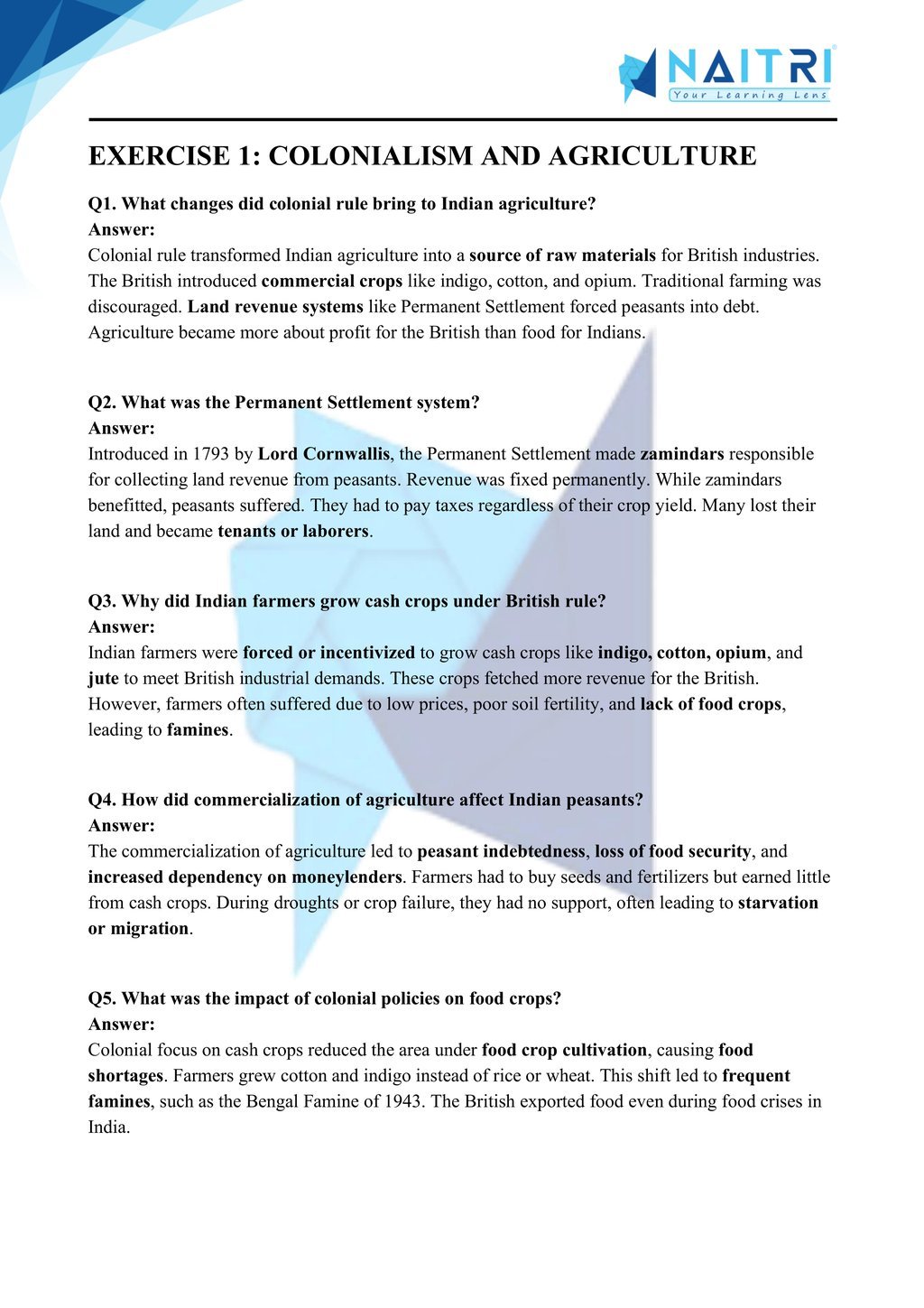
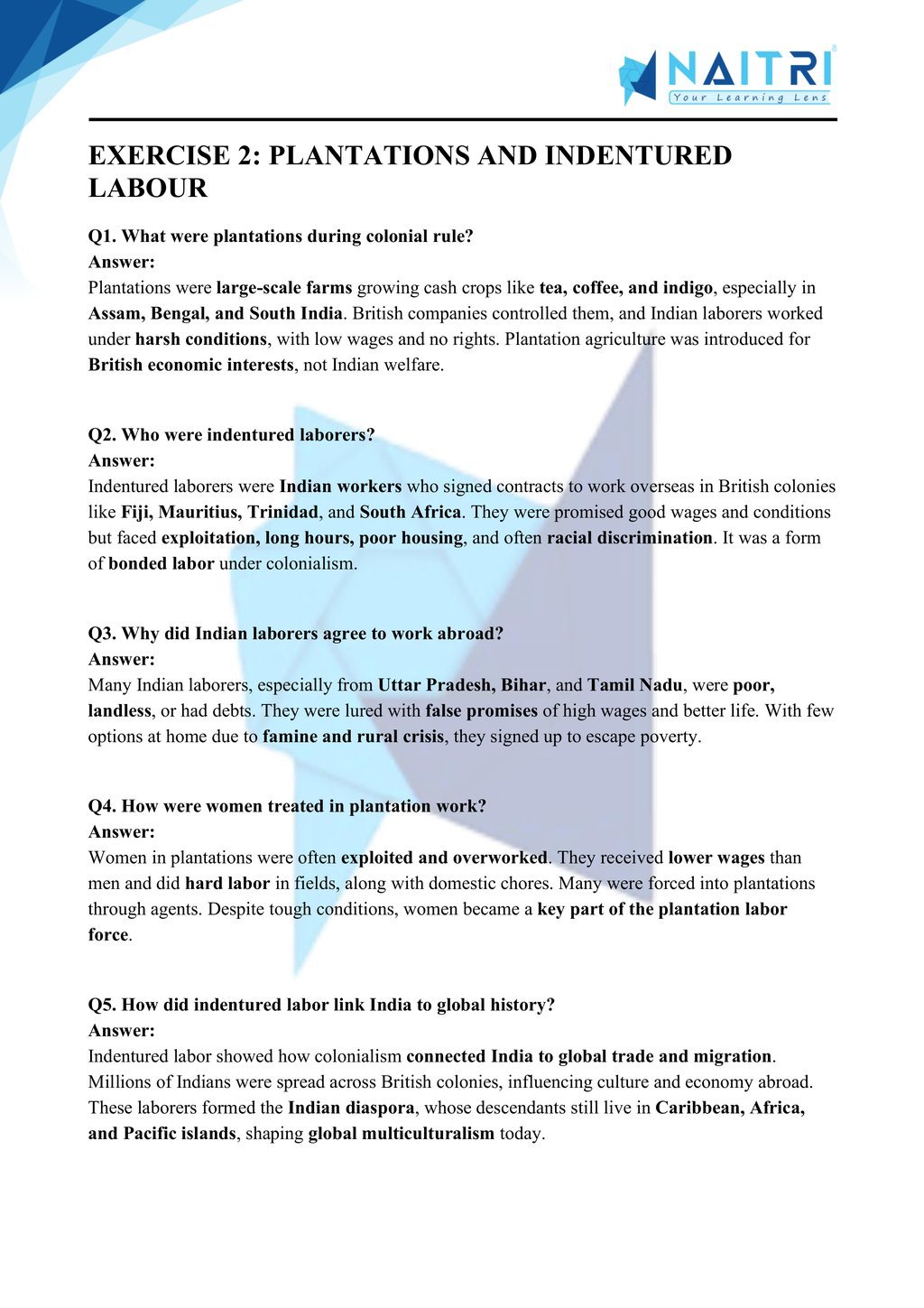
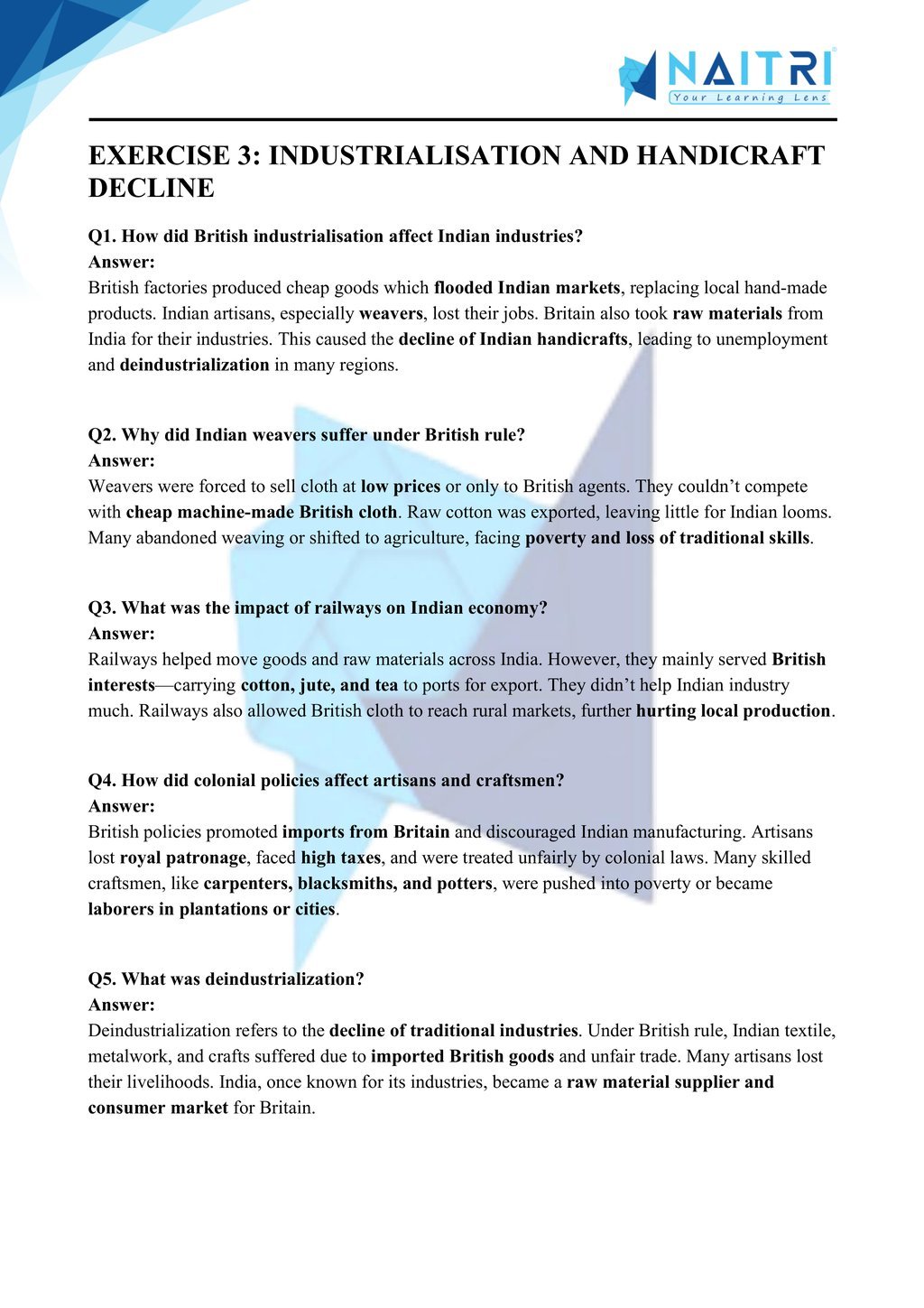
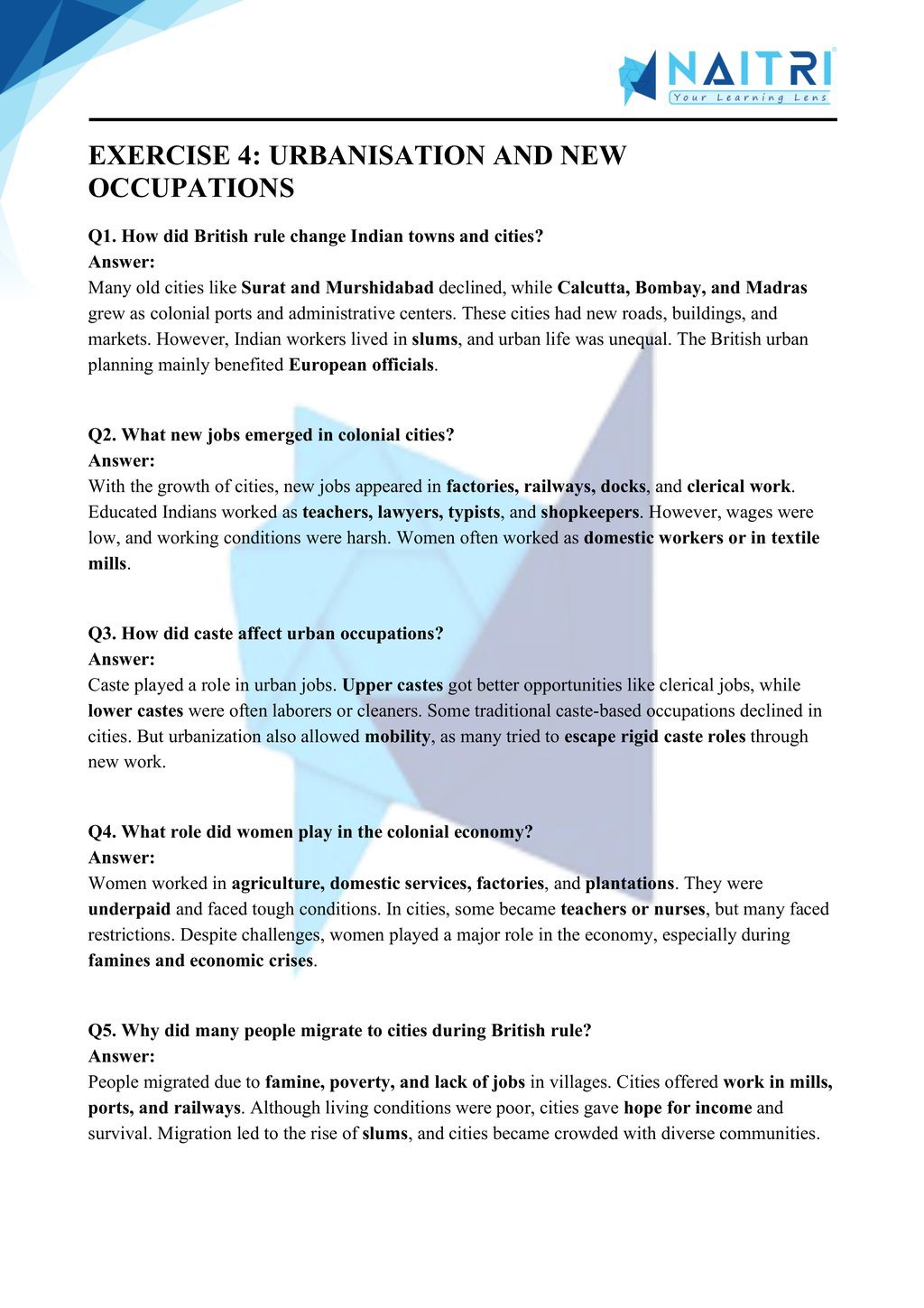
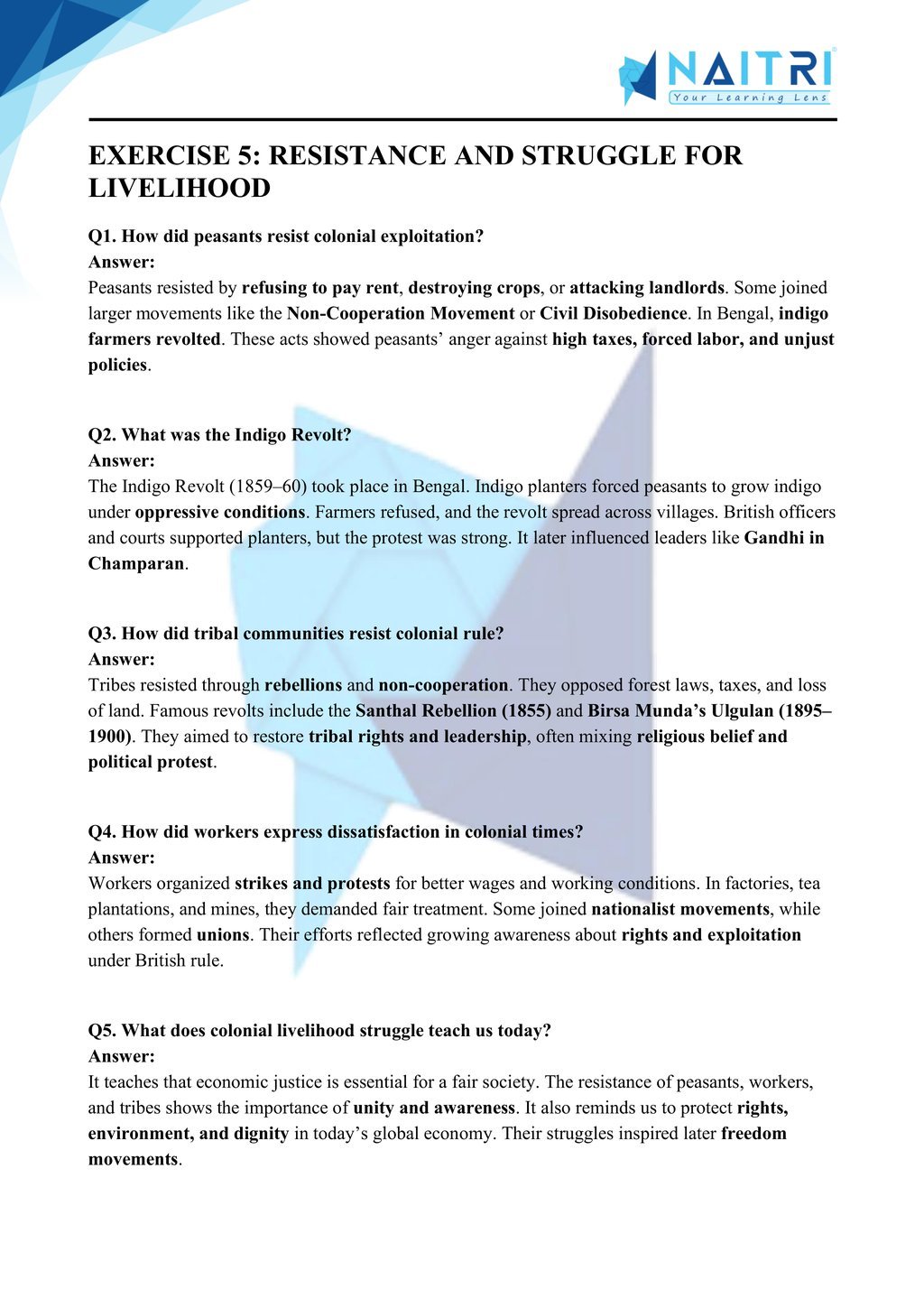
Experience Science Like Never Before – With AR!
Understanding Livelihoods, Economies and Societies is now more exciting and immersive! With the NAITRI App, you can explore complex history concepts through Augmented Reality (AR). Explore trade routes grow, communities evolve, and traditional systems shift — right in front of you. Our AR-powered lessons make learning interactive, 3D, and fun, helping you retain concepts better and enjoy every topic.



Visualize . Interact . Understand . The future of learning is here
Livelihoods, Economies and Societies – Important Questions with Answers
What do you mean by the term ‘livelihood’?
Answer: Livelihood means the activities, work, and income sources people use to support themselves and their families. It includes farming, labor, trade, and services in society.How did colonial rule affect Indian crafts and industries?
Answer: British rule led to the decline of Indian handicrafts by flooding markets with cheap British goods, imposing taxes, and discouraging native industrial and craft production.What was the impact of British land revenue policies on Indian peasants?
Answer: Harsh land revenue policies forced peasants to pay high taxes or lose land. Many became landless, went into debt, or migrated to cities or plantations.Who were the Santhals and how did colonialism affect them?
Answer: The Santhals were a tribal community relying on forests. British land control and outsider settlement pushed them into poverty and wage labor on plantations.What were plantations and why were they established?
Answer: Plantations were large farms growing export crops like tea and coffee. British established them using cheap labor for profit, with harsh conditions for workers.What was the role of the zamindars under British rule?
Answer: Zamindars collected revenue from peasants for the British. Many exploited farmers, forcing them into debt or landlessness due to high taxes and harsh demands.How did rural laborers live during colonial times?
Answer: They worked for low wages, lacked land ownership, had irregular jobs, and were dependent on landlords or moneylenders, living in poverty and uncertainty.What was the Ryotwari system?
Answer: Under Ryotwari, peasants paid tax directly to the British. It was practiced in South India and often caused hardship due to fixed and high revenue demands.Why did Indian farmers grow cash crops during British rule?
Answer: British policies forced farmers to grow export-oriented crops like indigo and cotton, reducing food production and causing famine and hardship among rural people.How did colonial rule impact traditional industries like weaving?
Answer: British imports ruined local handloom weaving. Artisans lost their jobs as cheap machine-made British textiles replaced Indian products in domestic and foreign markets.What was the Damin-i-Koh?
Answer: Damin-i-Koh was a forested region in Bengal allocated to Santhal settlers. Later, they were exploited by moneylenders and traders and restricted from forest use.What is commercialization of agriculture?
Answer: Commercialization of agriculture refers to the shift from food crop cultivation to growing cash crops for profit, often under pressure from colonial export needs.How did colonialism change forest-based livelihoods?
Answer: British forest laws restricted tribal access, banned shifting agriculture, and forced many to work as low-paid laborers or migrate in search of work.What was the impact of the railways on Indian economy?
Answer: Railways mainly served British interests by transporting raw materials and goods for export. They connected markets but did little to benefit Indian industries.Who were the indentured laborers?
Answer: Indentured laborers were Indian workers sent abroad under contracts to work on plantations. They faced exploitation, poor living conditions, and limited rights.Why did many peasants migrate during colonial times?
Answer: Due to poverty, debt, and food shortages, many peasants migrated to cities, plantations, or abroad for work, often ending up in harsh, exploitative jobs.What was the condition of artisans during colonial period?
Answer: Artisans suffered due to loss of markets, competition from British goods, and lack of patronage. Many left their crafts and turned to labor work.How were tribal communities affected by colonial forest laws?
Answer: Forest laws criminalized their traditional practices like hunting and shifting cultivation, forcing many into wage labor, migration, or resistance against British policies.What role did moneylenders play in rural society?
Answer: Moneylenders gave loans at high interest to poor peasants. When farmers failed to repay, they lost land or became bonded laborers, worsening rural poverty.How did the British exploit Indian agriculture?
Answer: British forced farmers to grow cash crops for export, imposed high taxes, and neglected irrigation or food production, leading to famine and peasant suffering.What was the Permanent Settlement system?
Answer: Introduced in Bengal, it fixed revenue for zamindars, who collected from peasants. It caused exploitation, insecurity for farmers, and stagnant agricultural productivity.How did tribal uprisings relate to economic exploitation?
Answer: Tribal revolts were responses to land loss, forest restrictions, and economic hardships imposed by colonial policies and exploitation by traders and officials.What was the impact of colonial economic policies on urban workers?
Answer: Urban workers lived in overcrowded slums, earned low wages, and had no job security. Many were migrants who faced exploitation in colonial industries.How did colonialism affect different regions differently?
Answer: Some regions like tea-growing Assam saw development for British benefit, while others faced land alienation, poverty, and neglect, creating regional imbalances.What is the long-term impact of colonial economic policies on India?
Answer: Colonial policies ruined industries, drained wealth, caused mass poverty, and created economic inequality. These impacts continued to affect India even after independence.
Forest Society and Colonialism explores how colonial rule in India affected forest communities and ecosystems. The chapter discusses British forest policies, the introduction of commercial forestry, and the impact on tribal livelihoods. It highlights indigenous resistance and how colonial exploitation reshaped economic and ecological landscapes. This chapter provides insight into environmental history and the struggle of forest-dwelling communities.
Download Naitri App
Easy, Visual Learning — Right on Your Phone
Learn with Augmented Reality! The Naitri app makes CBSE and MP Board concepts interactive and fun — even in low-resource settings. Watch lessons, complete homework, take tests, and track progress — all in one place. Anytime. Anywhere.
Available on








